|
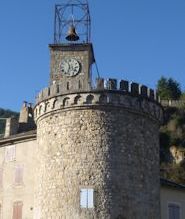 Dwight Peck's personal website Dwight Peck's personal website
Ten wintry days in the South of France
Montpellier, Arles, the Camargue, and lots of et cetera
You may not find this terribly rewarding unless you're included here, so this is a good time for casual and random browsers to turn back before they get too caught up in the sweep and majesty of the proceedings and can't let go.
Meyrueis and the Gorges of Jonte and Tarn

En route from our sojourn in the neighborhood of Montpellier, we've just been visiting the medieval 'Templar village' of La Couvertoirade, and now we're proceeding over the Causse plateaux for our New Year's Eve dinner party in Meyrueis, in the Gorge of Jonte.
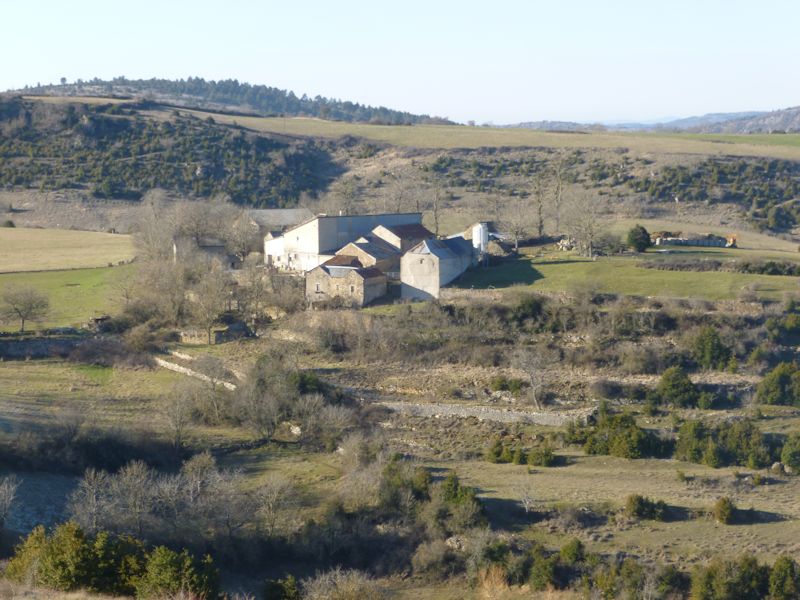
Typical scenery of the Cévennes
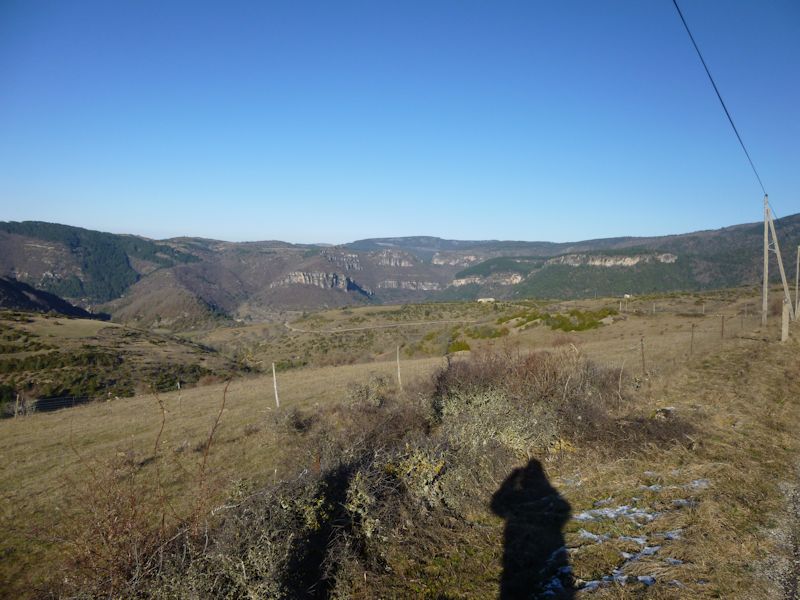
The limestone plateaux called the 'causses' in the Cévennes mountainous region of the southern Massif Central
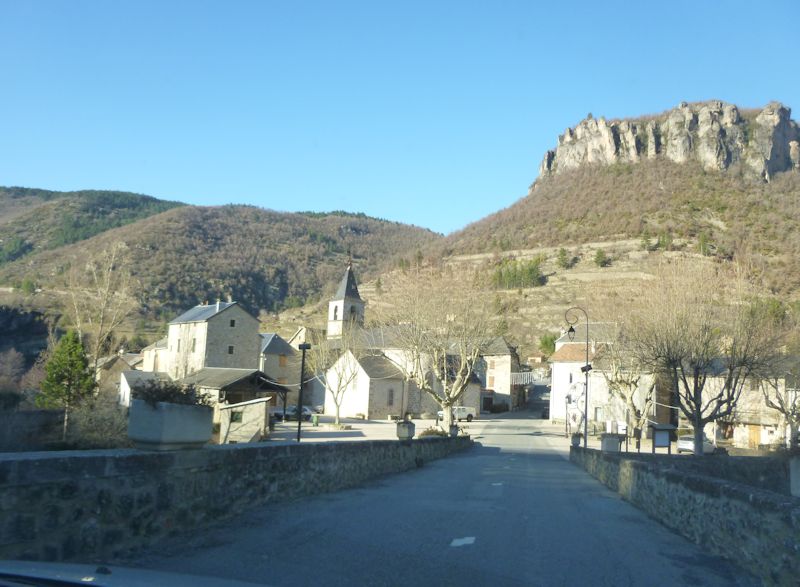
Who knows how? -- we're following the Volvo Navigator GPS thing, but the route doesn't seem to make much sense on the real map -- we're motoring through the picturesque village of Trèves in the middle of, well, nowhere, but on the banks of the river Le Trèvezel.
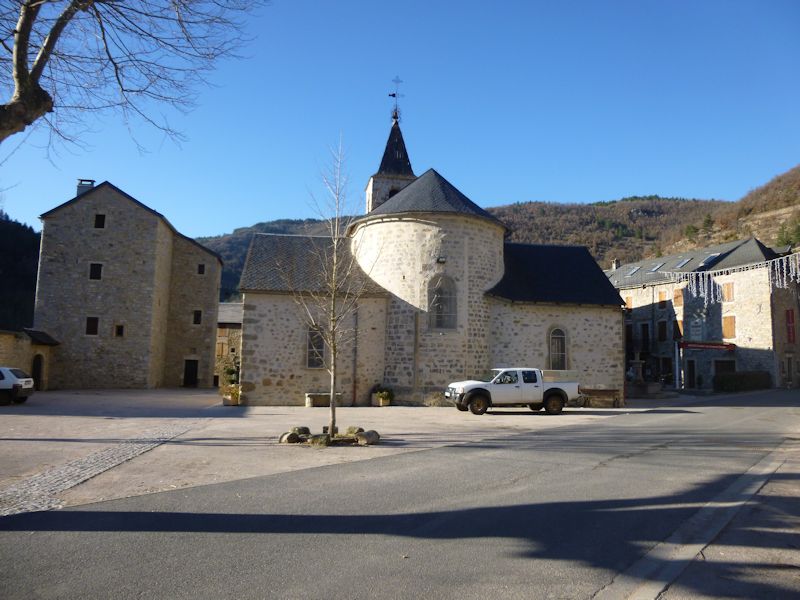
Beautiful downtown Trèves
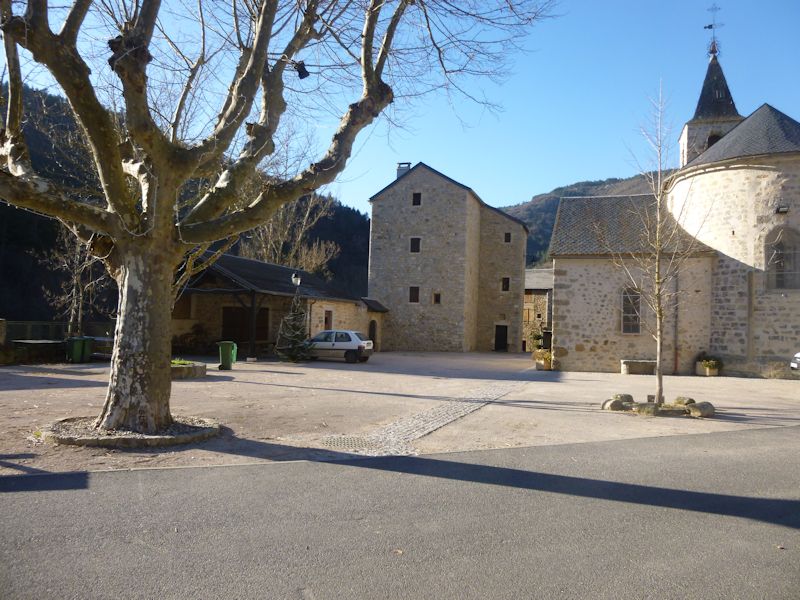

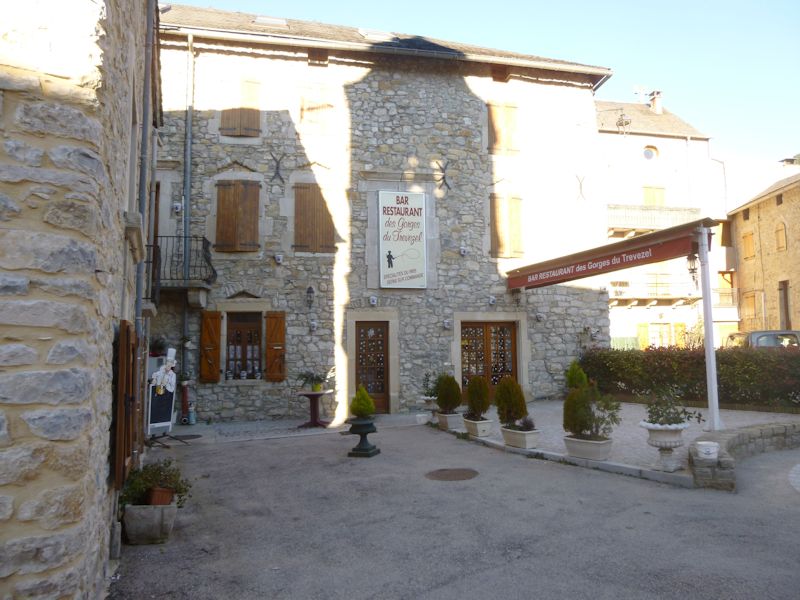
The Gorges du Trèvezel are evidently much prized for their fishing opportunities.
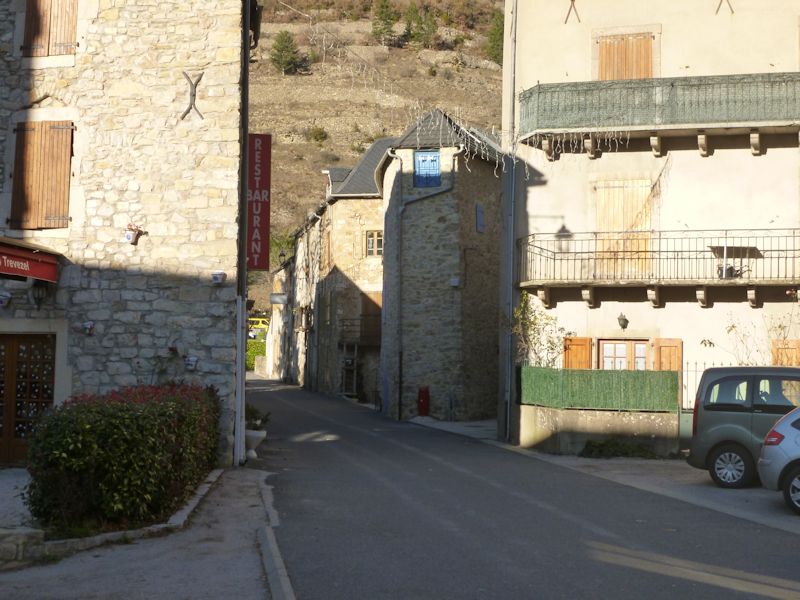
The central section of Trèves and, in fact, the suburbs as well, all in one photo
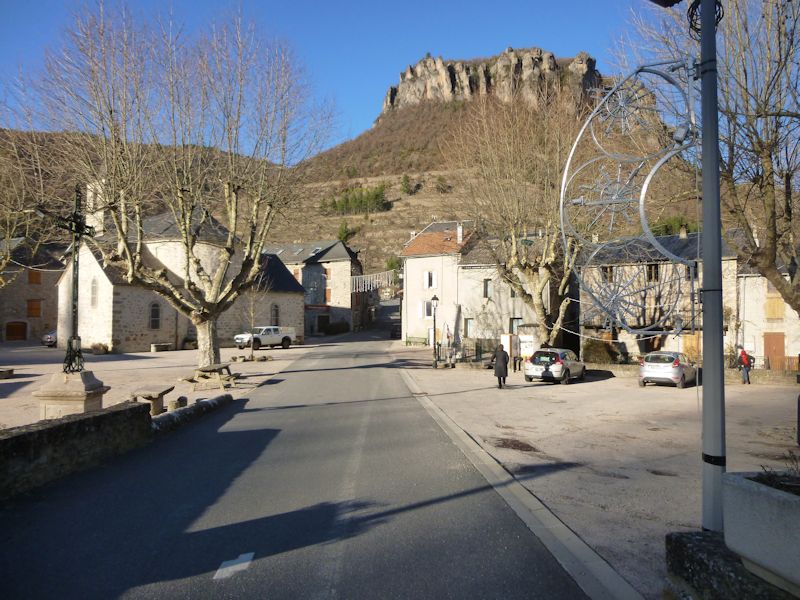
Off we go again -- as far as the end of the street, where two gendarmes were posted to go over our papers and car fairly thoroughly. As so often in these cases, the older one was abrupt and imperious, technically courteous but grimly skeptical our explanations, whilst the younger one was embarrassed for the older one. Anyway, they let us go.
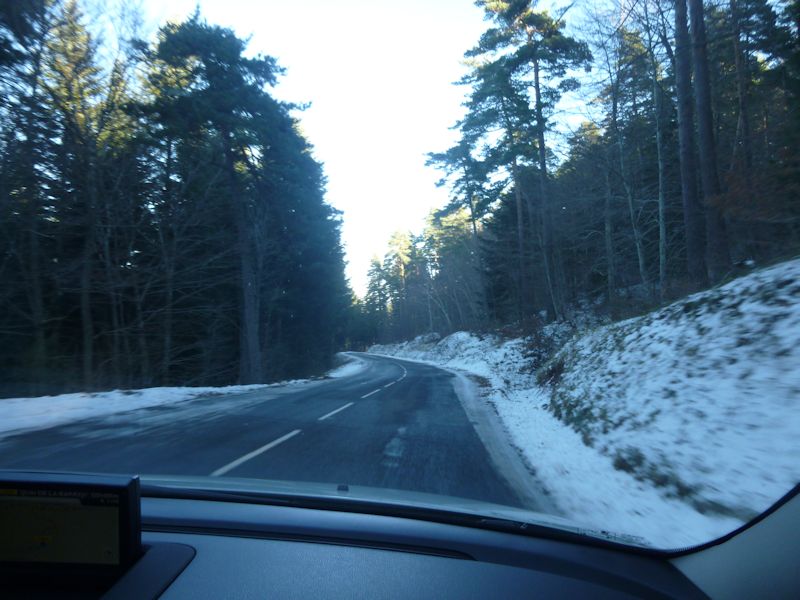
Up and over and . . .

. . . down eventually into Meyrueis, a commune of about 900 souls in the Lozère department at the confluence of three rivers, if you wish to call them that. But our room's not ready yet.
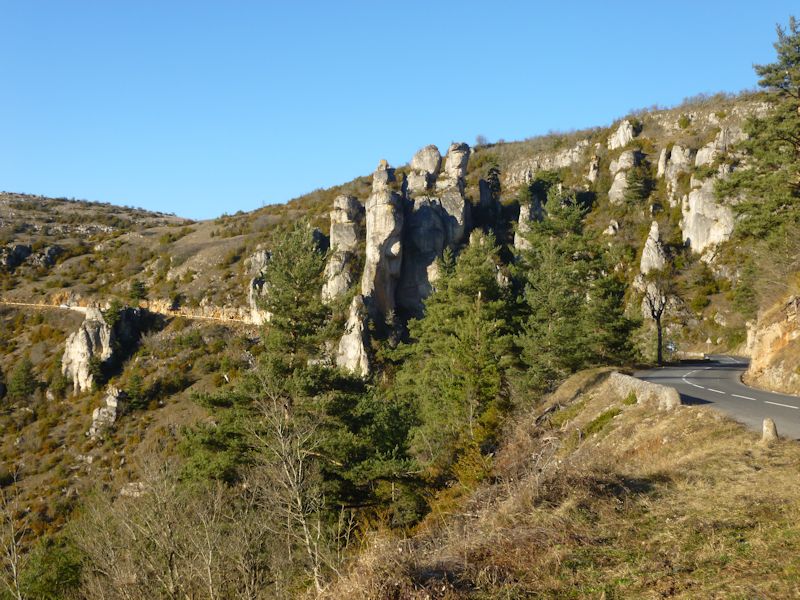
We'll occupy our time by sightseeing up the side of the causse above the Gorge de la Jonte, in the huge Parc national des Cévennes.
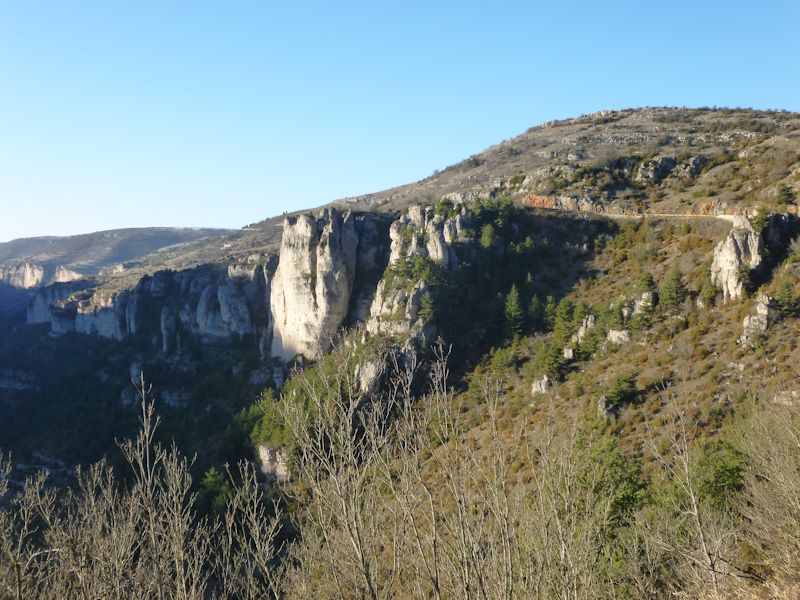
Higher and higher onto the Causse Méjean

The road through the Gorge of the Jonte is down below.
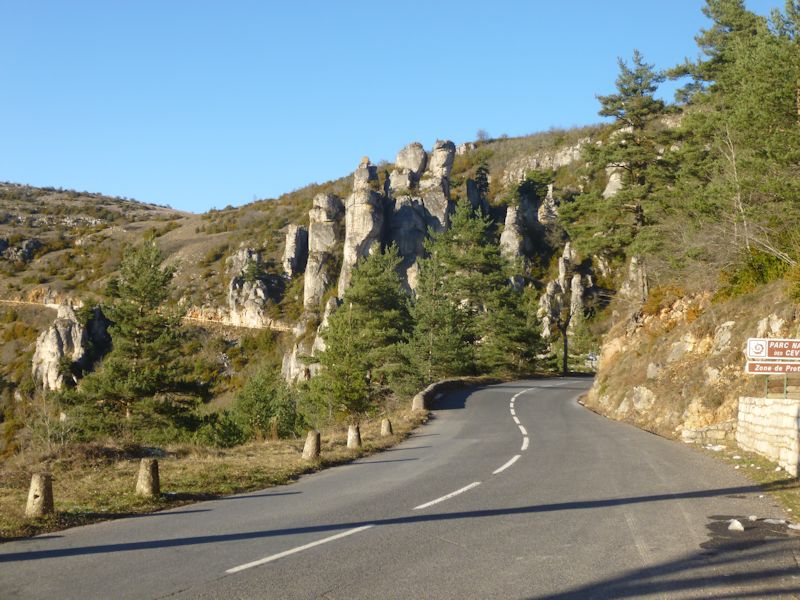
Our room must be ready by now.
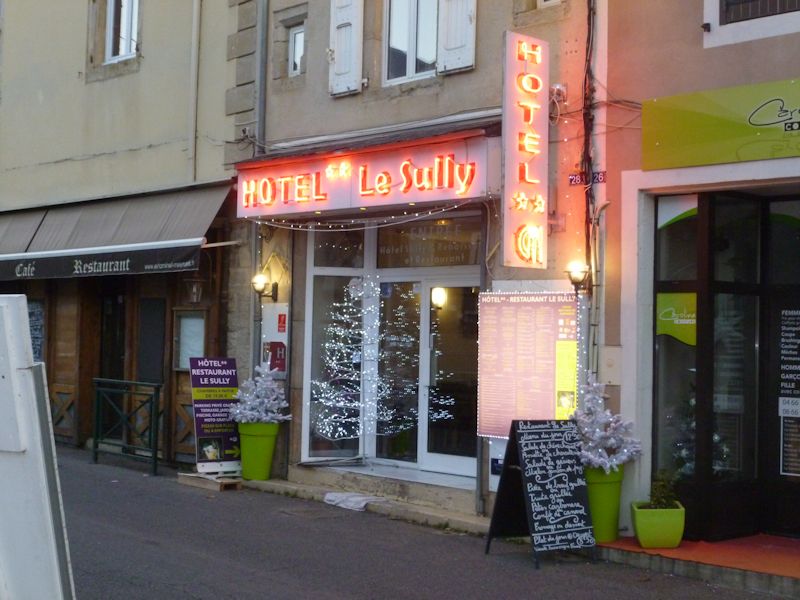
We're booked into the Hôtel Le Sully for New Year's Eve -- an establishment well known to us from our visit in 2008, when we fell in love with the regional specialité, the aligot with saucisse d'herbes. Which is principally why we're here now; gasping in anticipation.
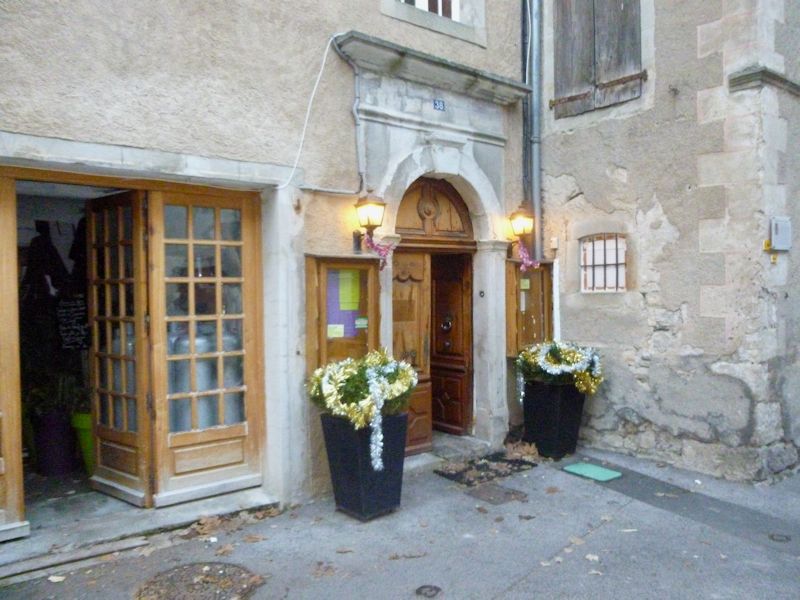
Then, as now, we were placed in the associated Hôtel de la Renaissance out in the back alley.
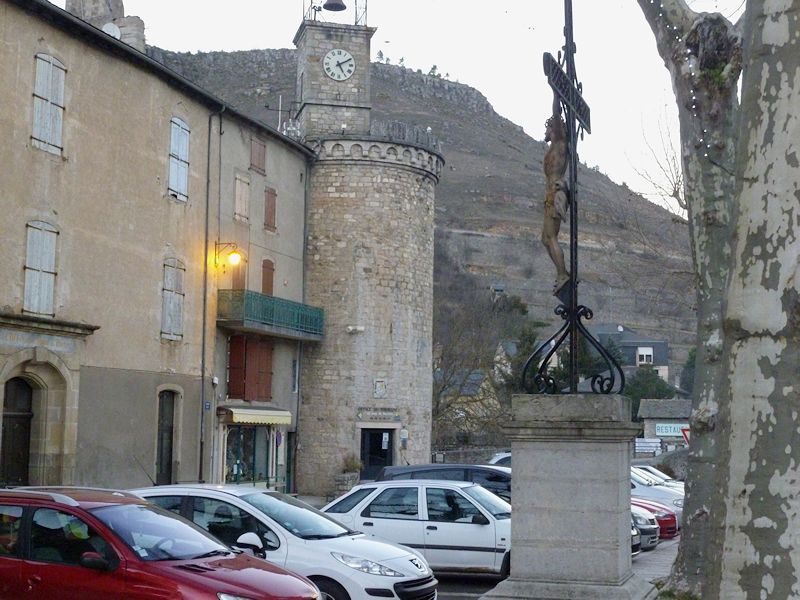
A quick walk round town to re-familiarize ourselves with the venue. Meyrueis, at the intersection of trade routes through the area, has a long if incompletely recorded history, from Celtic tribes distributed amongst the causses to early Christian communities, to Carolingian-era barons of the Anduze family (with a castle up on those rocks) to a succession of owners through to the 14th century. The clock tower is a remnant of the old city wall.

The Maison Portalier from the 15th century, at the foot of the Rue des Gras (an Occitan word for 'stairs'). The inscription on the lintel says 'Tricaudin, eater of foxes' and is considered to have been the sign of a tavern.
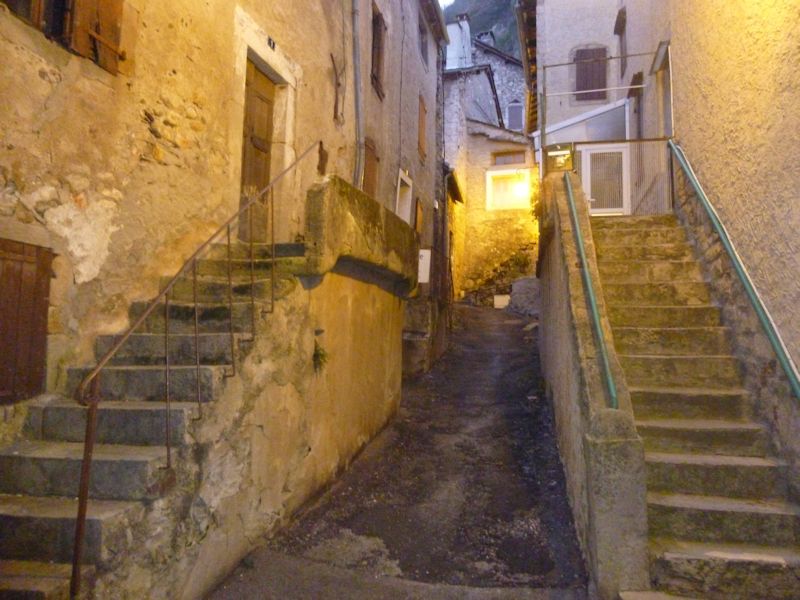
The Rue des Gras up the hill behind the village. The town was a prosperous trade and transhumance centre from the 10th century, with license to hold three annual fairs and weekly markets from 1033; they even had a tiny Jewish quarter. The immediate area abounds with the remains of old monasteries and a hospital of the Knights of St John, with a decent pilgrimage trade attracted by the pieces of the "True Cross" that somehow fetched up here. In the 16th century, everybody took up hatting as a profession and the town went Protestant, but got battered out of that over the next two centuries or so, with an uneasy mix of the two religions but an abiding faith in making hats. Nowadays, in the absence of a brisk trade in hats, tourism makes up the difference.
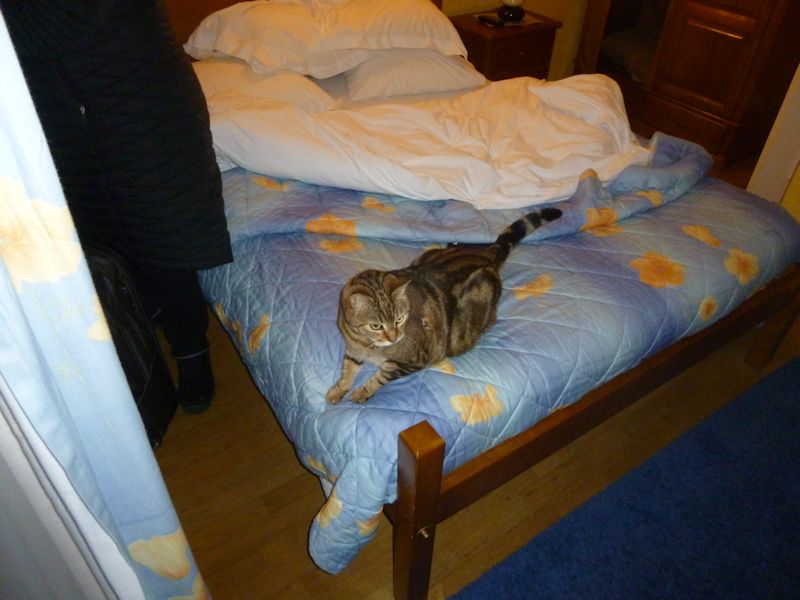
The Squirrel will excuse us and occupy herself as we descend to the New Year's Eve dinner and party.

Wrong -- The Squirrel took off and is presently (it turned out) hiding under that stack of chaises longues.
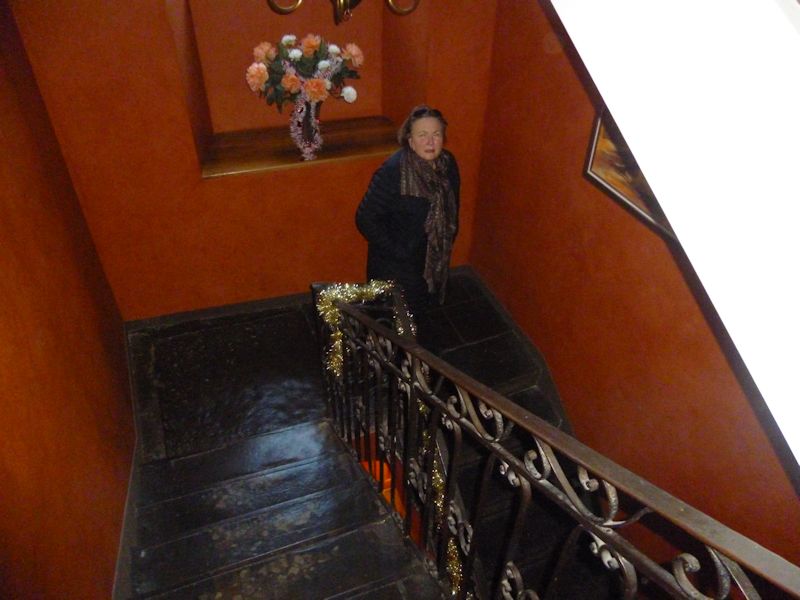
Time for dinner. No aligot, however -- New Year's Eve is a fixed menu, in this case, la chasse (specifically, deer), which I'm sorry to say I don't find a welcome substitute for aligot or much else.
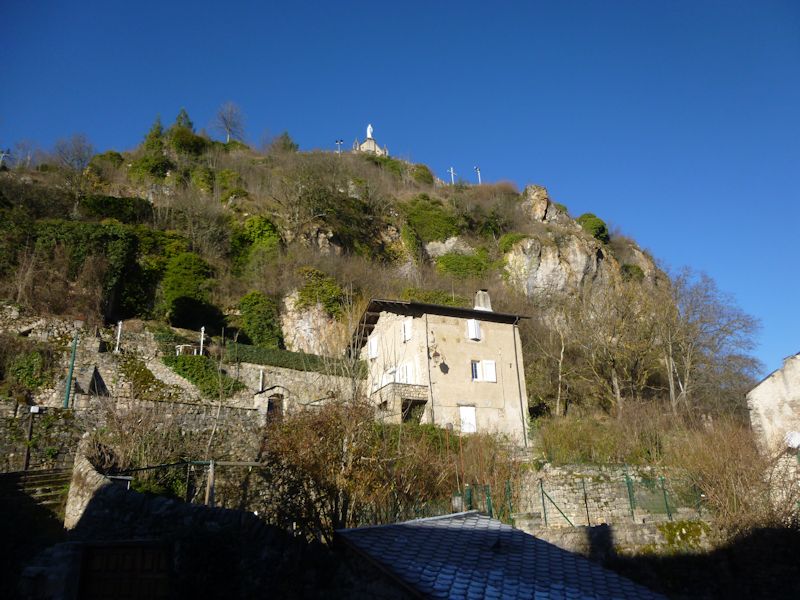
A bright morning, looking out our back window
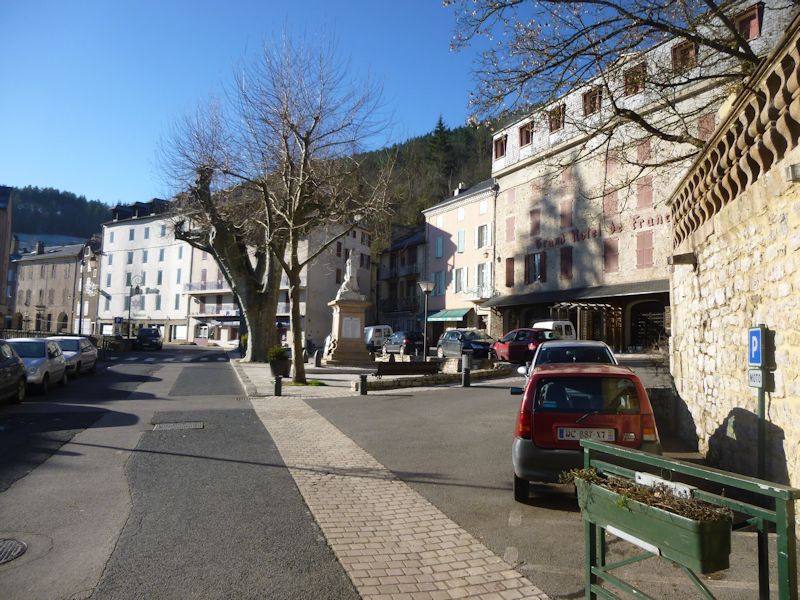
The town square and the Grand Hôtel de France
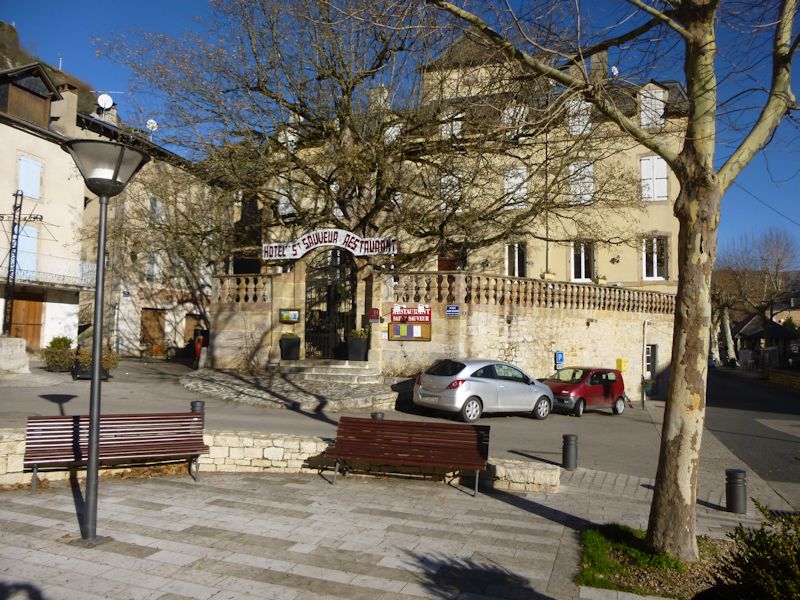
The Hôtel St-Saveur (a venerable family name from the old days)

The town square again
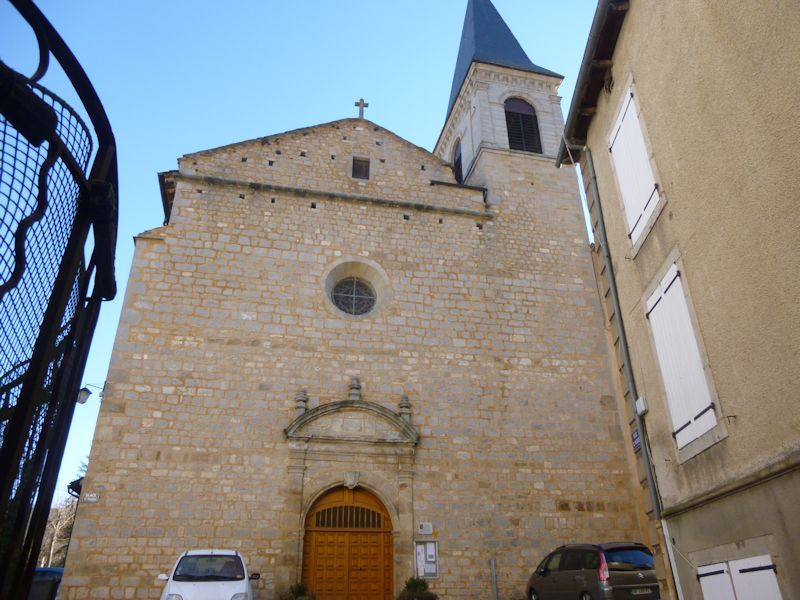
The church and priory of St Peter, on the site of a priory founded in 1034, reconstructed by the Jesuits in 1663.
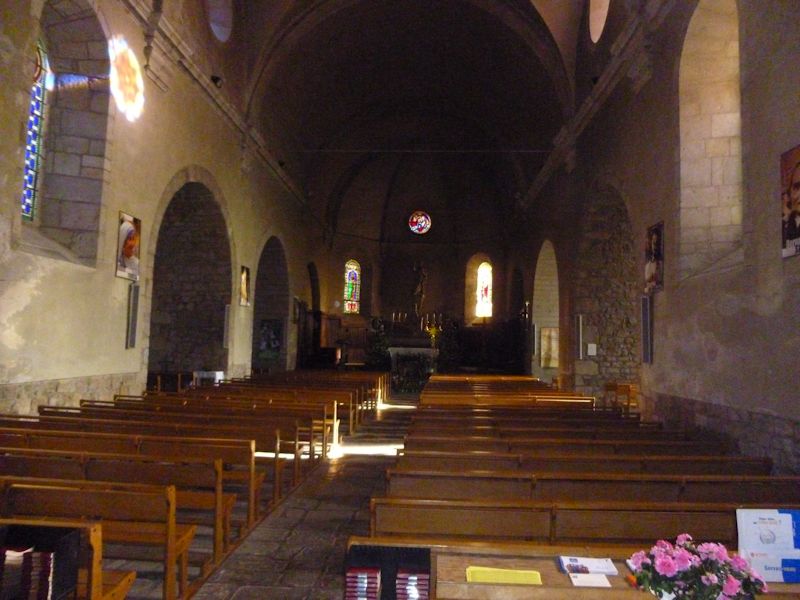
It's worth a look-in. The Jesuit reconquistadors of the Counter Reformation had rough going in this chiefly Huguenot region, but it's all settled down now luckily.

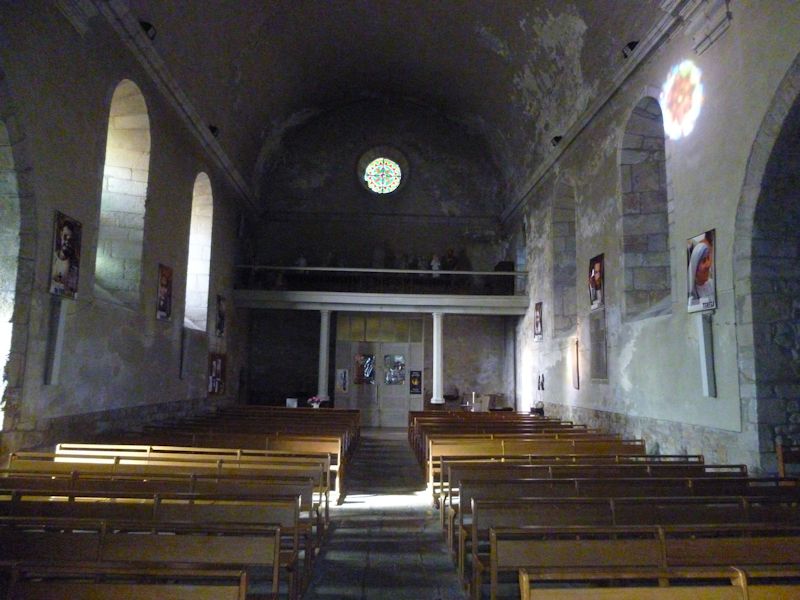


A bridge over the mighty Béthuzon
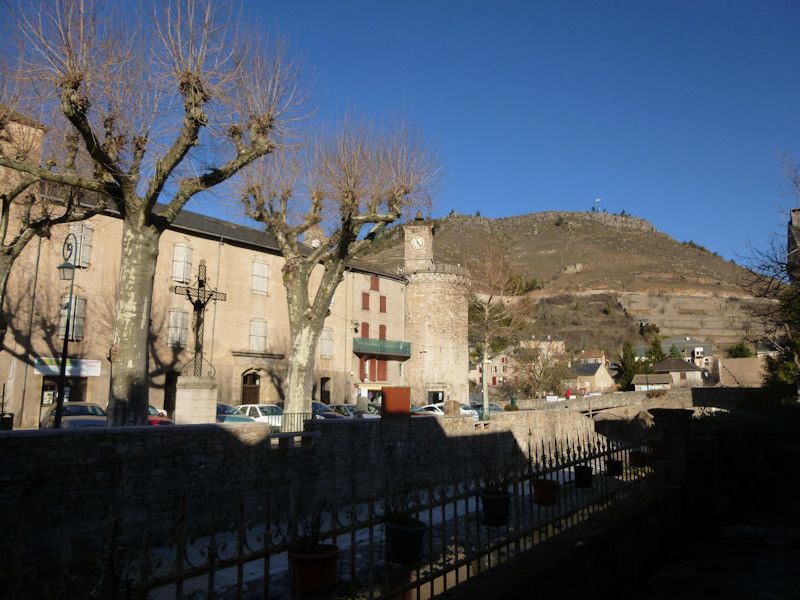
The clock tower, rebuilt in 1568 on a medieval base, is a vestige of the original fortifications that were destroyed by Louis XIII's functionaries in 1632.
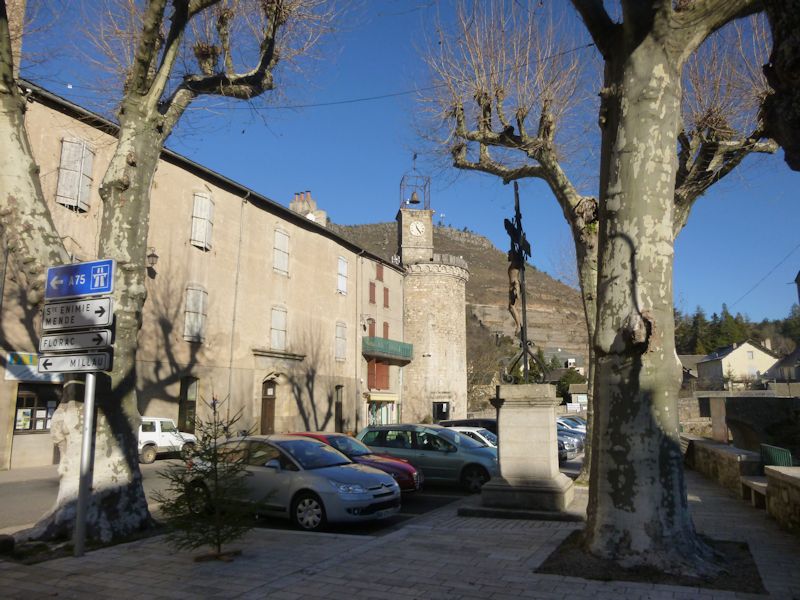
Downtown Meyrueis, with the tourist office in the clock tower
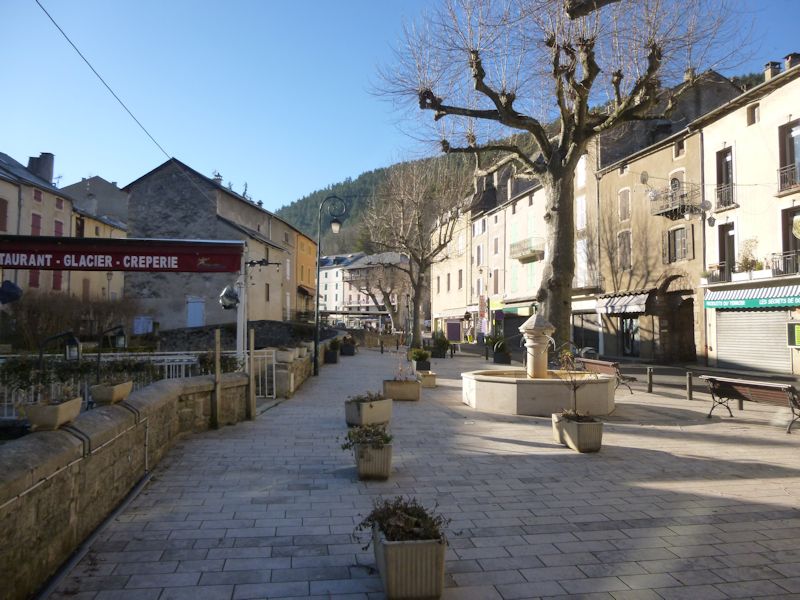
The Place Sully, named for the Duke of Sully (1560-1641), a right-hand man to the equivocating Protestant king ("Paris is worth a mass") Henri IV.
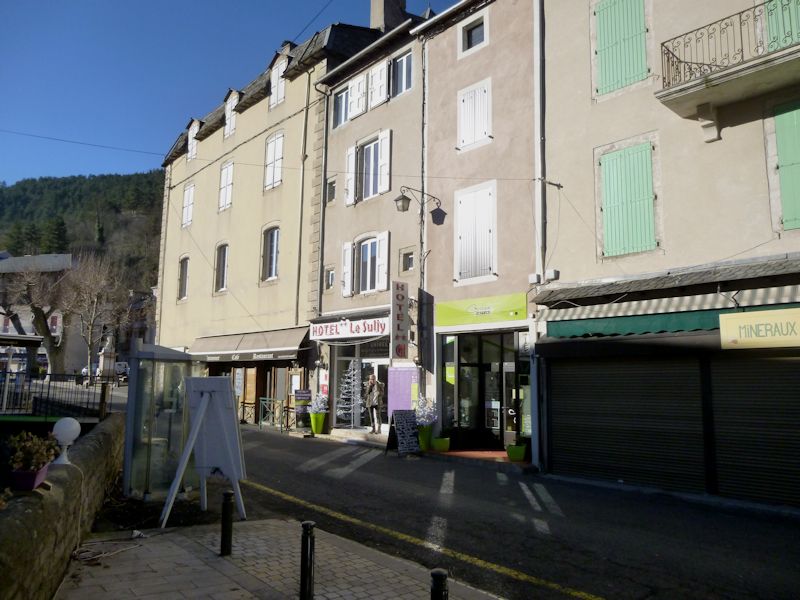
The Hôtel Le Sully in daylight, with one of our party companions talking endlessly on her cellphone out front.
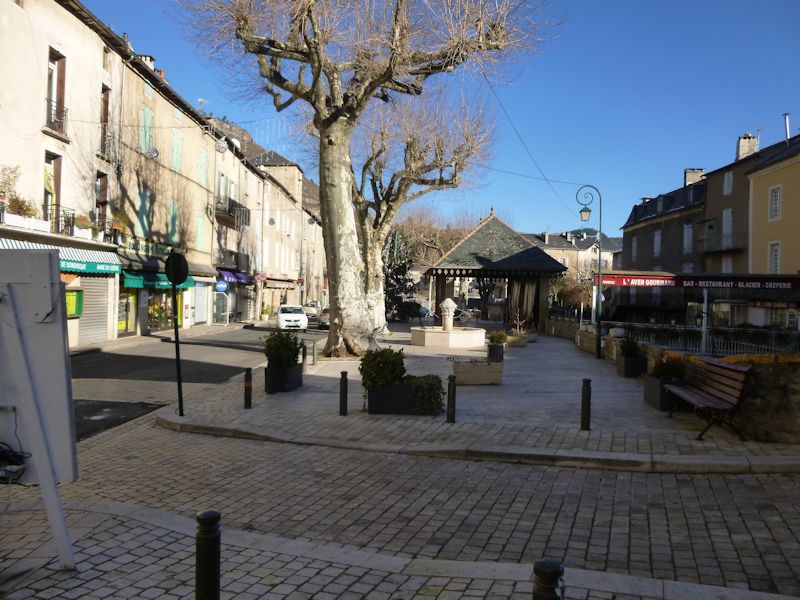
Street scene
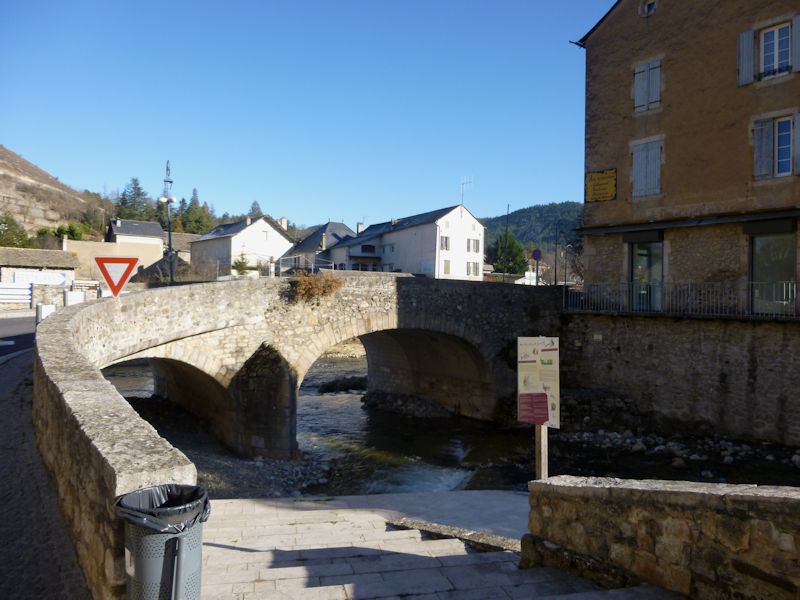
The bridge over the Béthuzon, where it empties into the Jonte
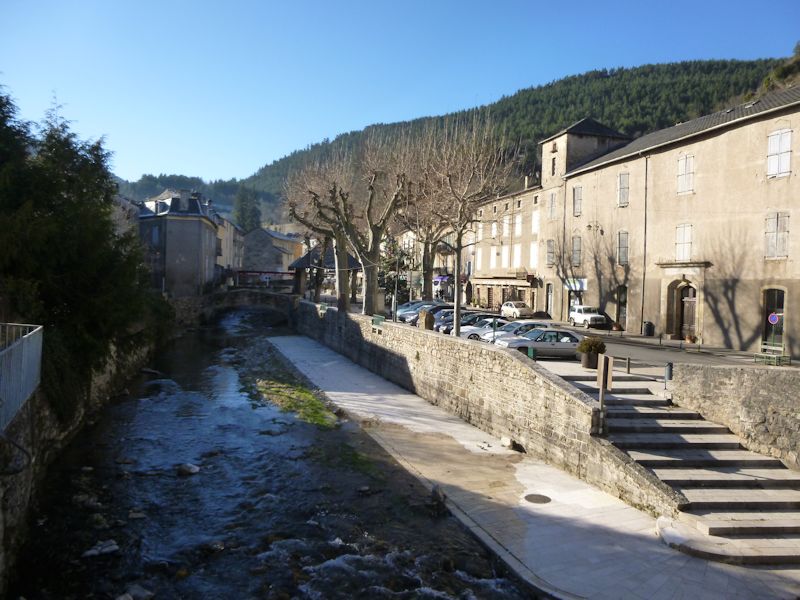
The Béthuzon
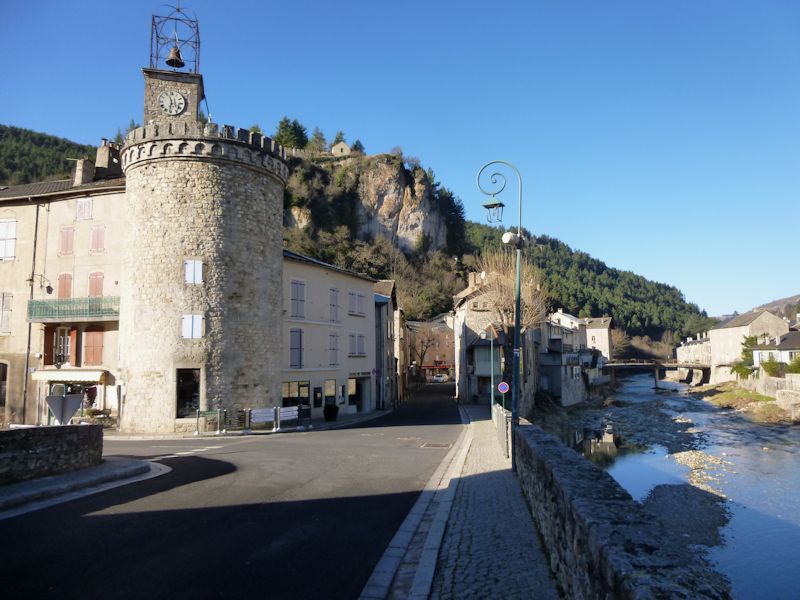
The river La Jonte
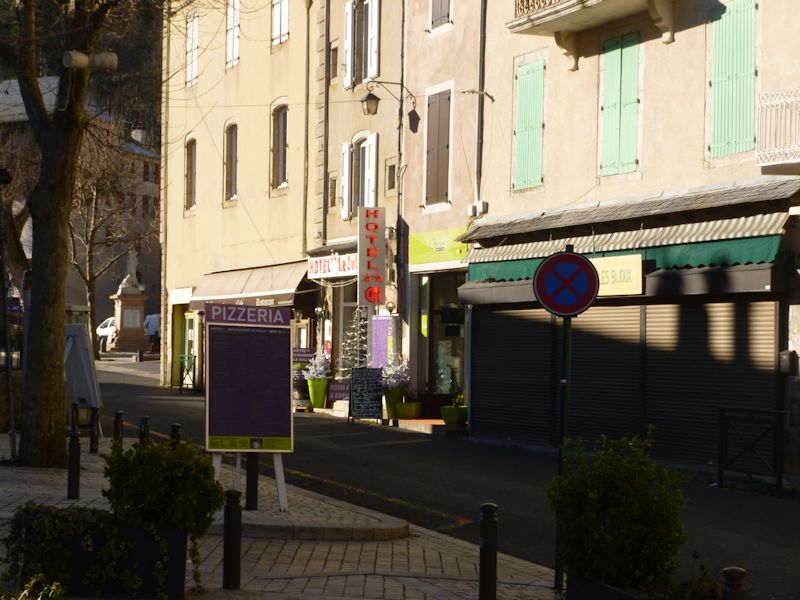
The hotel zoomed
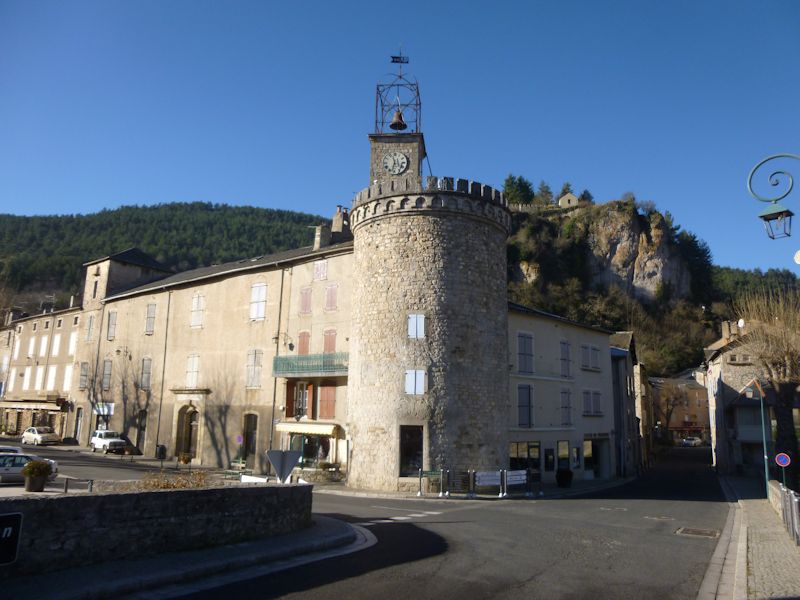
The tourist office in the clock tower again. The present tower, built onto a medieval base as mentioned above, dates from 1568 as part of the town fortifications that were being strengthened during the Wars of Religion. The clock itself dates from 1634, and the iron belltower above it from 1897.

Our new used car, Sven, in the alley between the Hôtels Sully and the Renaissance, ready to go away now.
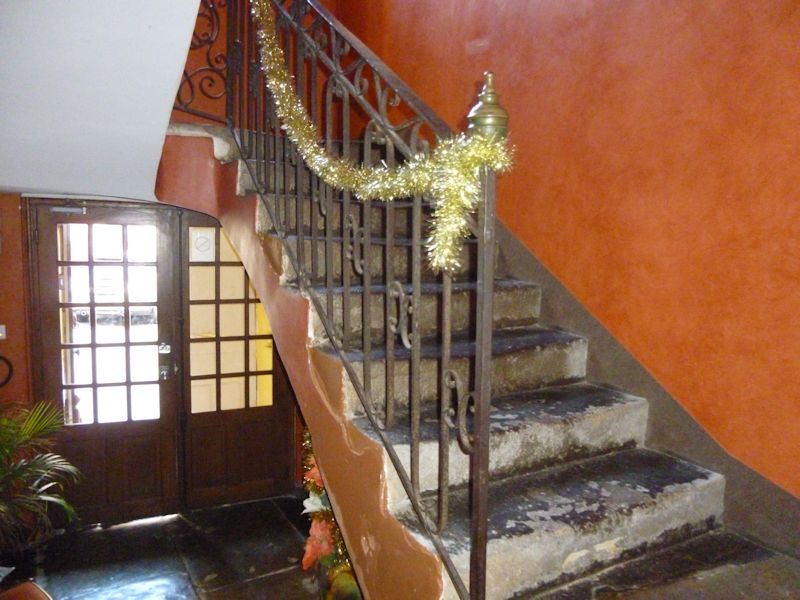
The Hôtel de la Renaissance

Ditto

Off we go, down the Gorges de la Jonte
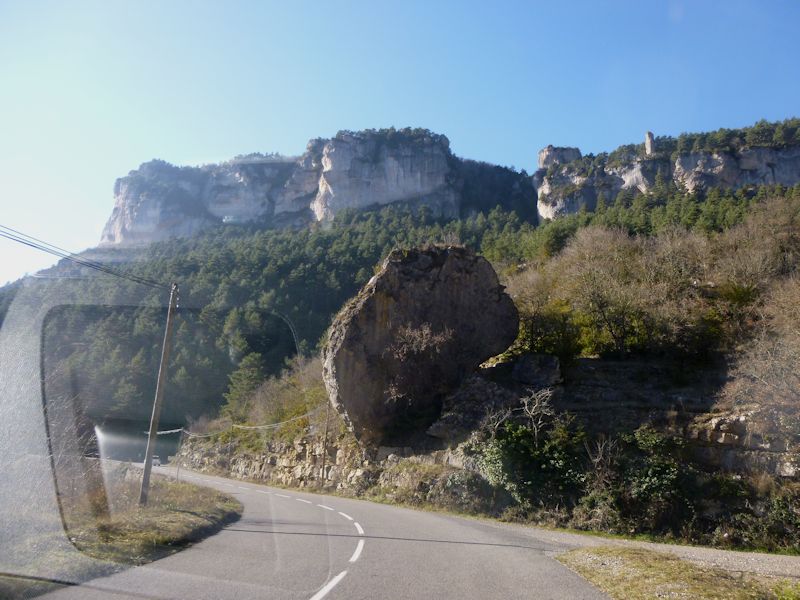
Driving by is an Act of Faith
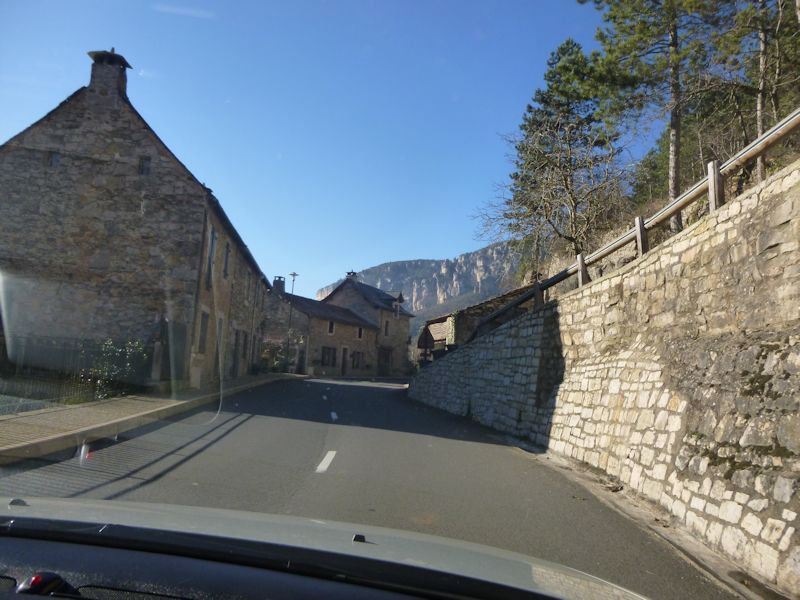
Street scene

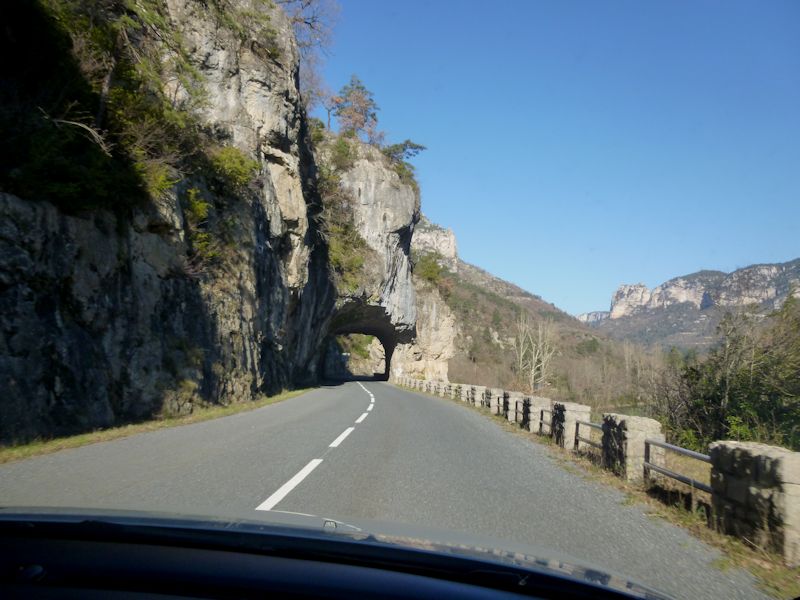
The Gorges de la Jonte
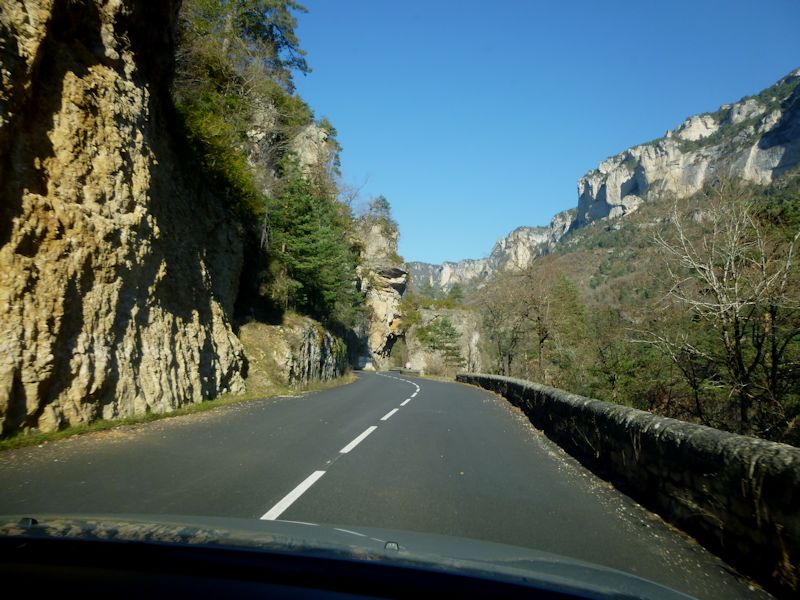
Ever westward
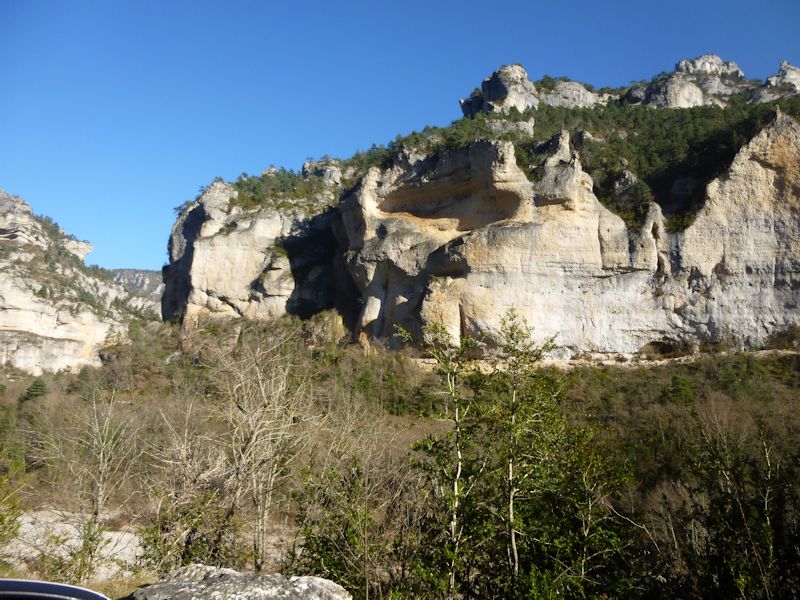
Gorges de la Jonte views en passant
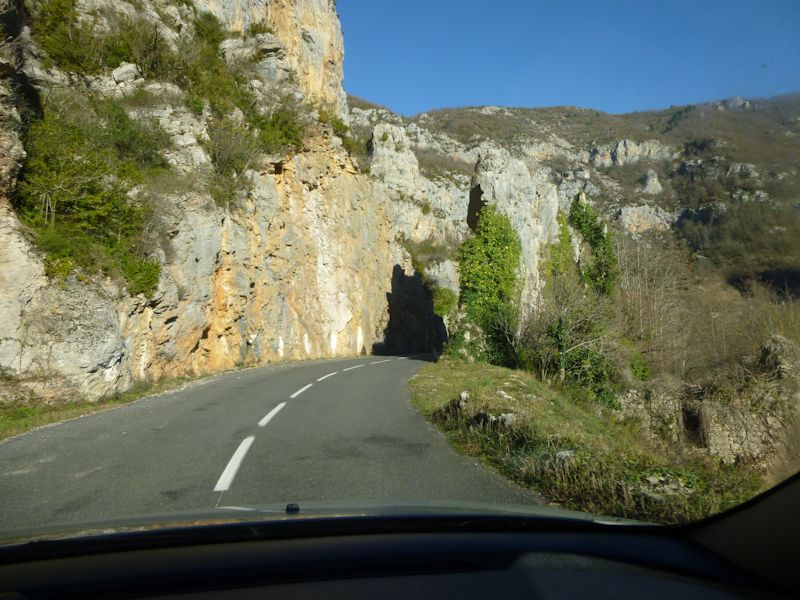
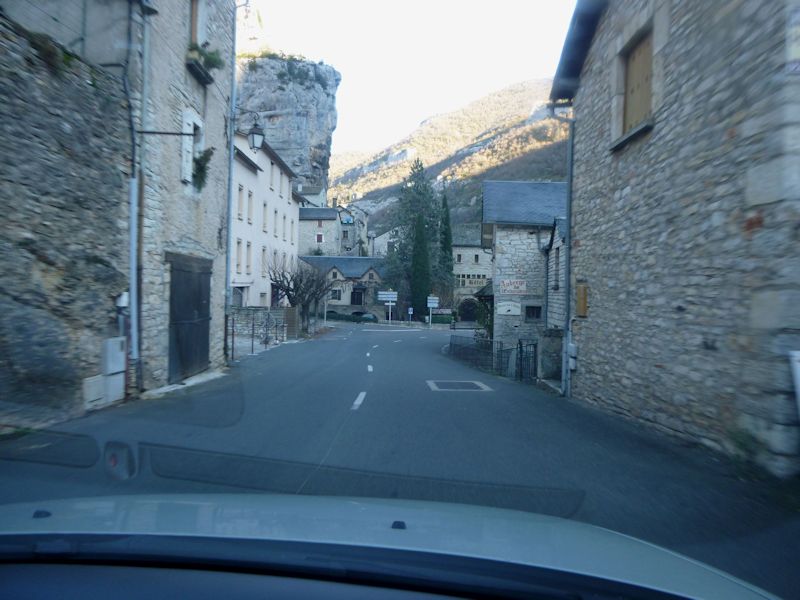
At Le Rozier the river La Jonte joins the Tarn, and we turn up northward, and then eastward, through the Gorges du Tarn.
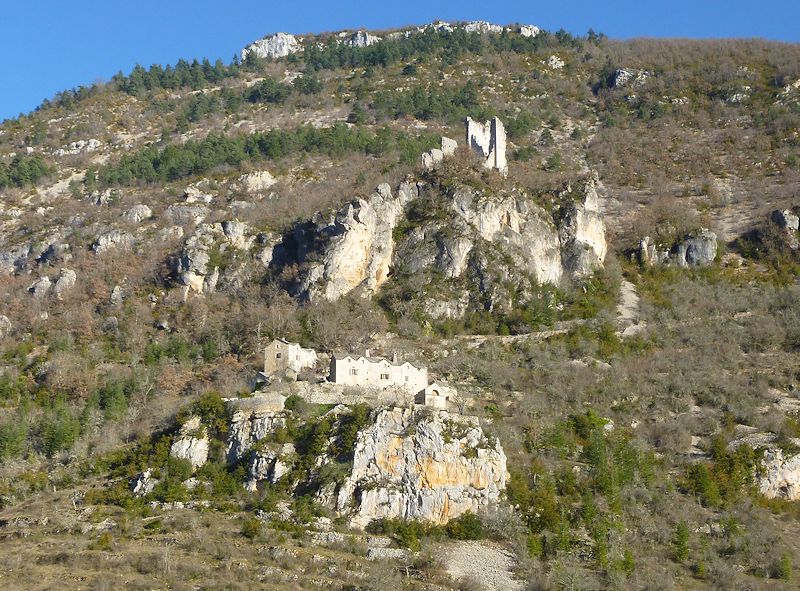
The river Tarn rises from Mont Lozère in the Cévennes and runs nearly 400 km westward to join the Garonne and eventually meet the Atlantic at Bordeaux. The Gorges, up to 600m deep in places, cut through more than 50 km of this upriver plateau/causse country between the Causse Méjean and the Causse de Sauveterre. West of the Gorges and Le Rozier, the Tarn is spanned by the Millau Viaduct [our visit in 2008], the tallest bridge in the world.
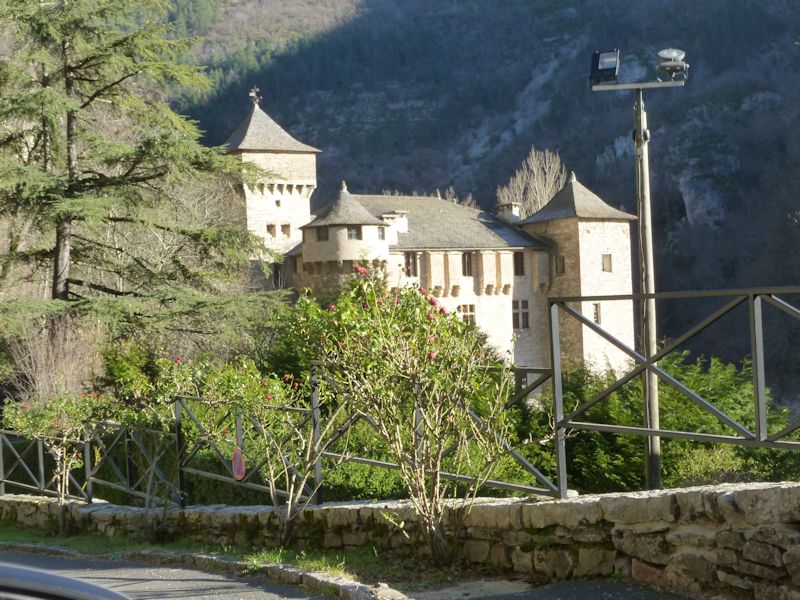
Roadside attractions
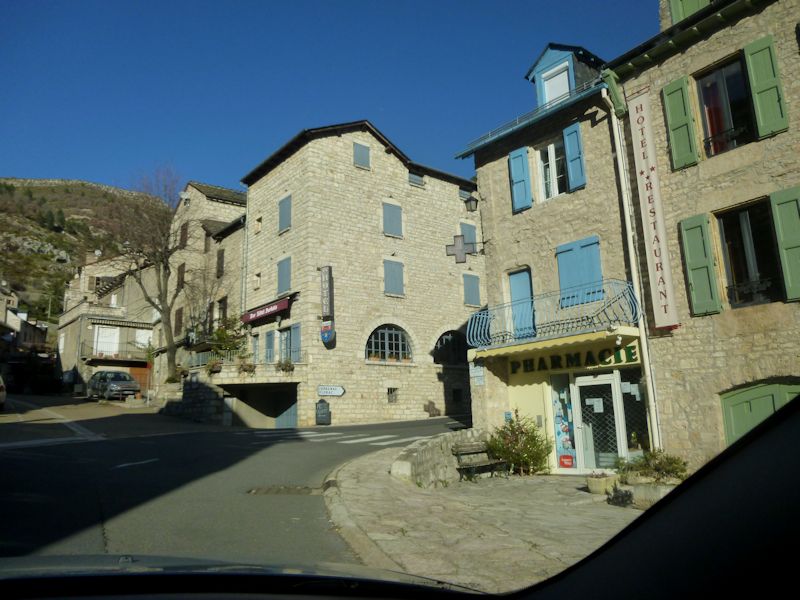
Turning eastward at Ste-Enimie, founded as a monastery/convent for the care of lepers by the 7th century intermittently-leprous later-sainted daughter of the Merovingian king Clothar II (it's said) -- the place became a pilgrimage site after the founding of a Benedictine monastery in the mid-10th century, but its monastic history was terminated by the French Revolution. Never mind, the building of this road in the early 20th century made it a pilgrimage site for tourists. We visited Sainte-Enimie at more leisure in 2008.
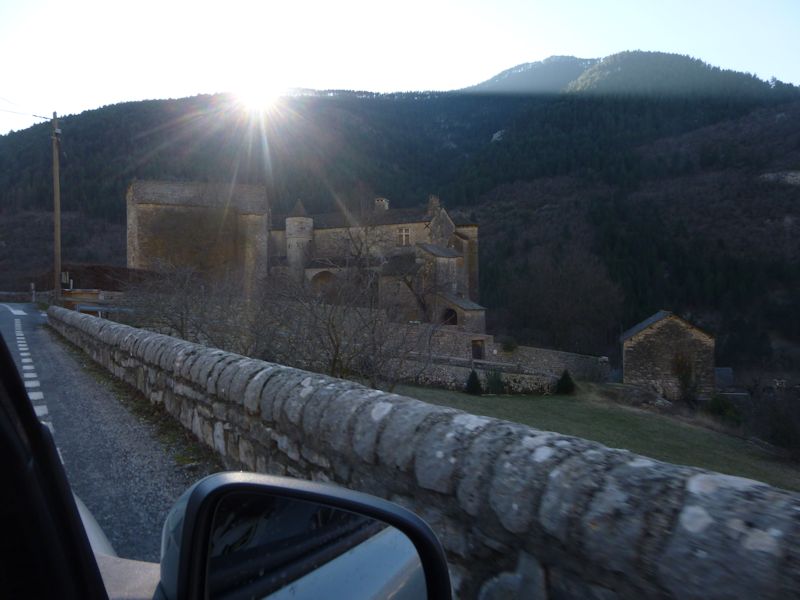
And now, out of the Tarn Gorge near Florac, southeastward past Alès, and directly into downtown Nîmes, where our Volvo Navigator GPS system failed us miserably amongst the one-way streets.
      
    
 Feedback
and suggestions are welcome if positive, resented if negative, Feedback
and suggestions are welcome if positive, resented if negative,  .
All rights reserved, all wrongs avenged. Posted 20 February 2015. .
All rights reserved, all wrongs avenged. Posted 20 February 2015.
|
 Dwight Peck's personal website
Dwight Peck's personal website





























































